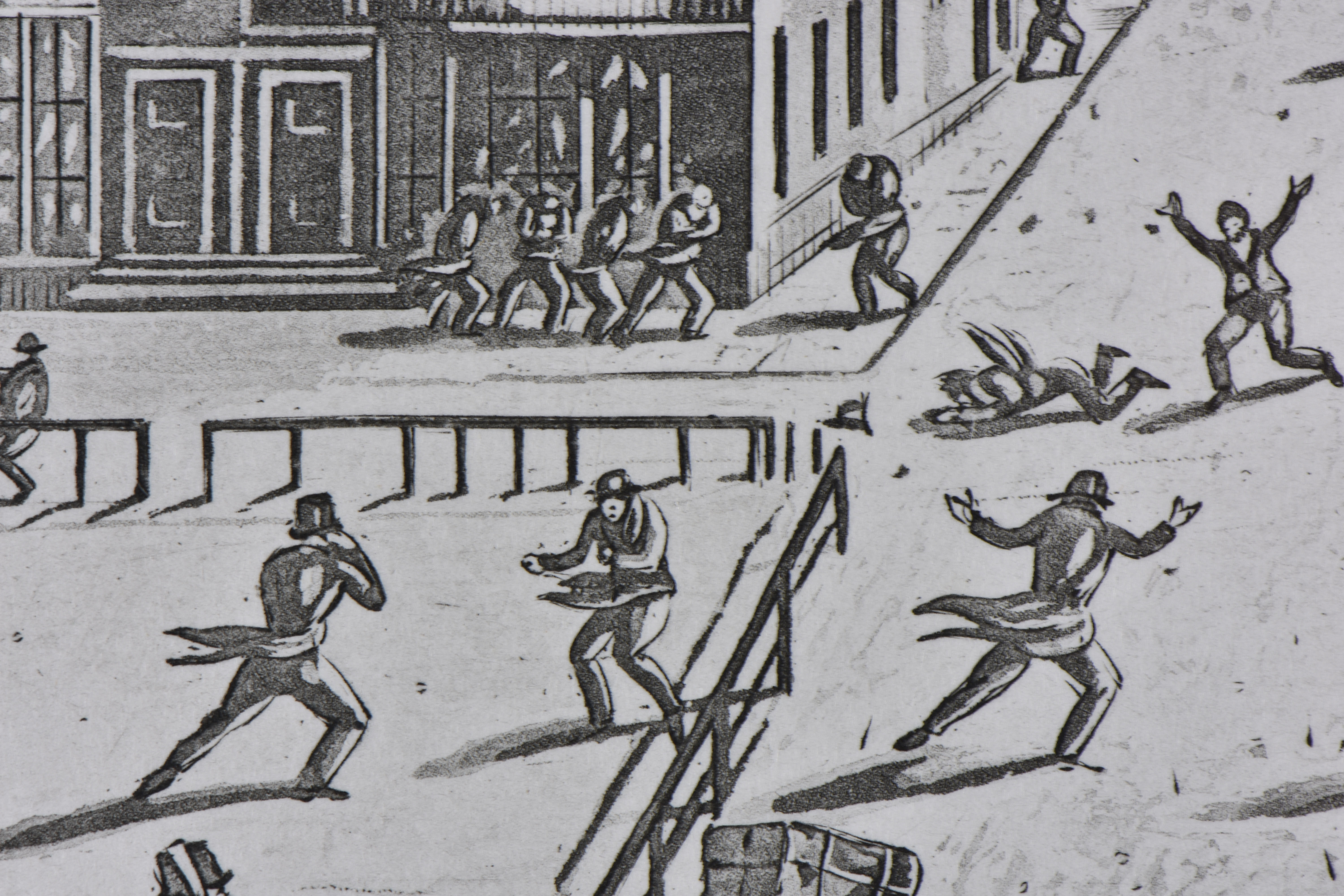The Inscription reads: 'To Capt.S. Brown. R.N. This plate representing the situation of the Chain Pier at Brighton during the late Tempest is with permission respectfully dedicated by his obliged servant J. Bruce.'
This aquaint depicts the original Suspension Chain Pier at Brighton during the Tempest of 1824, the first of the great storms that battered the pier during its lifetime. The pier had only been completed the previous year, but fortunately survived with only minor damage to its ironwork.
The chain pier was built as a landing stage for pleasure cruisers and packet ships from Dieppe as the town did not have a natural harbour. pleasure cruises and packet ships making to the journey to and from Dieppe. But it became a popular attraction for locals and visitors who were charge a 2d. entrance fee and could visit the shops at the base of the towers. Amongst others it was captured in paint by JMW Turner and John Constable. Queen Victoria’s landing at Brighton in 1843 was also famously depicted by Richard Henry Nibbs.
The designer of the pier was the Captain Brown of the dedication. On retiring from the Navy he turned his hand to the design of chain piers, having already used chains with limited success on ships' rigging. Built upon wooden piles of Norwegian fir, the towers for the pier were constructed from cast iron with Brown’s patent wrought iron chains connecting them. Wooden platforms were then hung from the chains to create the connecting walkways.
The weather finally did for the pier in 1896 when it was completed demolished by a storm. By that time, the pier was in decline anyway and due for demolition to make way for the new Palace Pier.
Chain Pier at Brighton during the Tempest, JohnBruce - Framed Antique Print
Image Numbers: 1208
Title: Chain Pier at Brighton during the TempestDate:1833
Artist: John Bruce
Medium: Aquatint
Framed size (h x w):

